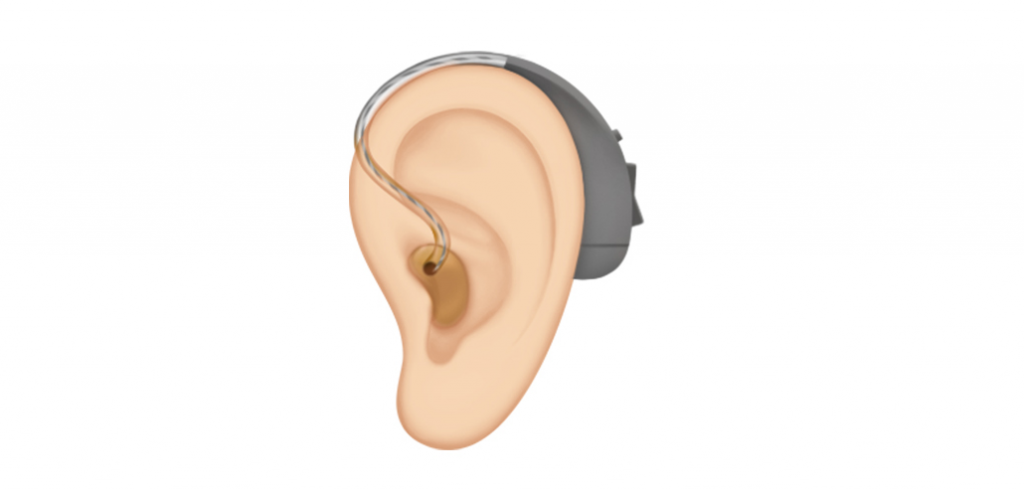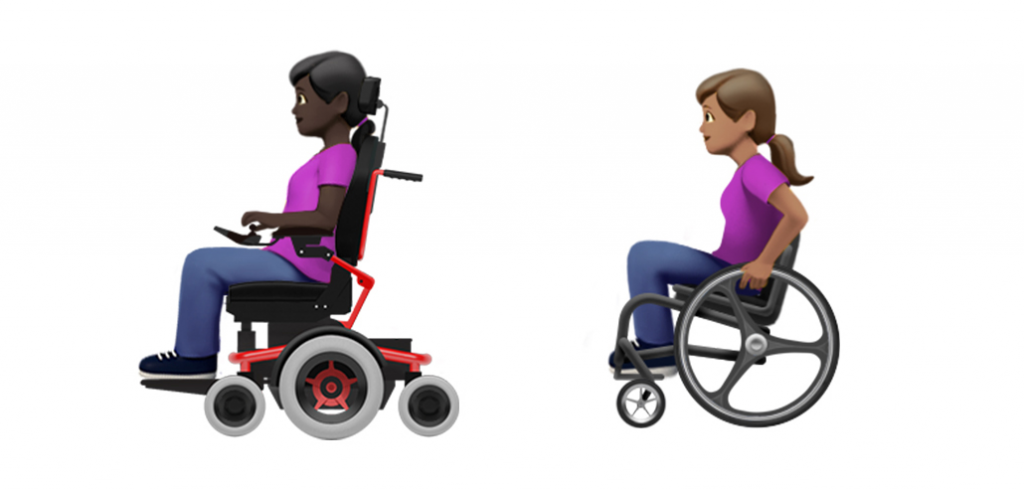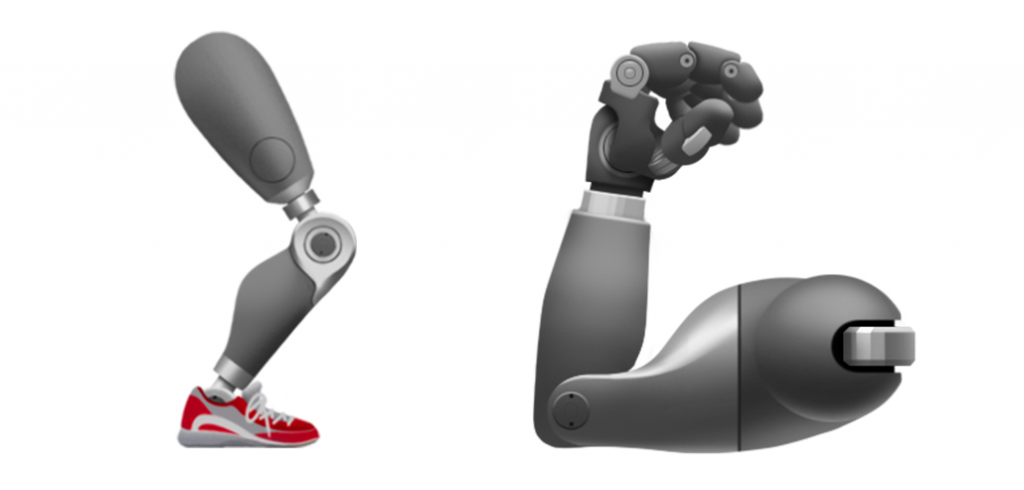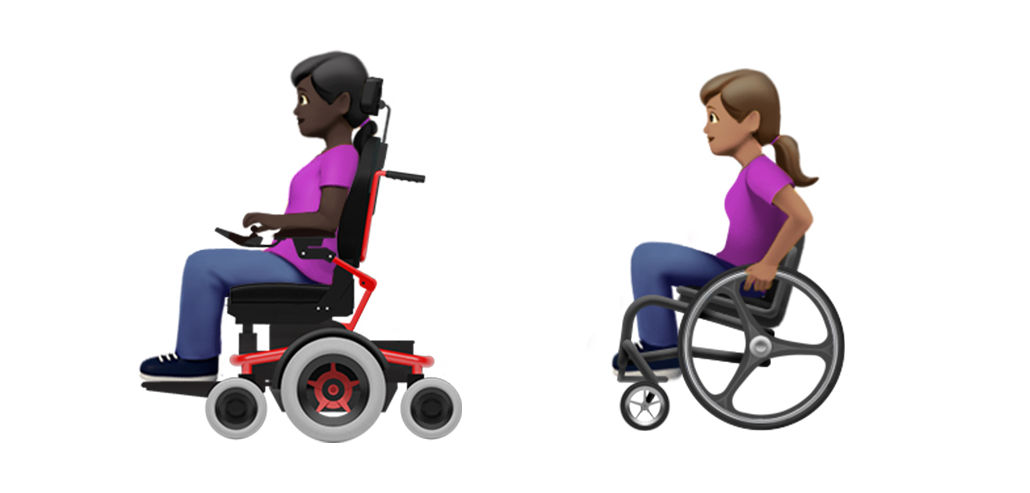Apple has unveiled a swathe of new disability inclusive emojis – including a wheelchair user and a hearing aid – aimed at “celebrating diversity in its many forms”.
New designs were proposed last year and are now being previewed on World Emoji Day (July 17).
Among the 59 new designs, which will be available to Apple users later this year, is an overhaul of the ‘Holding Hands’ emoji which allows users to select any gender or skin tone.
“Emojis have become a crucial part of how many of us communicate,” writes Stephanie Collins, from Human Rights Watch’s disability division. “It is only right that people with disabilities, as the world’s largest minority, are represented in, and able to access, culture and communication like this equally.”
But she adds: “There is still a long way to go for full inclusion and accurate representation of people with disabilities.”
With this in mind, RightsInfo has taken the opportunity to gather some key facts around the disabilities represented in the new emojis.
1. Hearing Aid

Image Credit: Apple
- Hearing loss is the second most common disability in the UK, affecting around 1 in 6 adults (an estimated 11 million people).
- Around 2 million people use hearing aids but its estimated 6.7 million could benefit from them.
- Around 900,000 people in the UK are severely or profoundly deaf.
Source: Hearing Link
2. Sign Language

Image Credit: Apple.
- As of March 2018, there are an estimated 151,000 people in the UK who can use British Sign Language. It is the preferred language of more than 87,000 Deaf people, according to the British Deaf Association.
- The UK government did not officially recognise British Sign Language as a language until 2003. However, the earliest documented use of sign language dates back to 15th century.
- A 2012 survey revealing that two out of three deaf people have been unable to access an interpreter at a hospital appointment when requested. Under the Equality Act 2010, public authorities and service providers – such as schools and hospitals – must provide reasonable accommodations to people with disabilities.
3. Wheelchairs

Image Credit: Apple.
- NHS figures reveal that there are around 1.2m wheelchair users in the UK, two thirds of them being regular users.
- For those who need them, delays in getting wheelchairs are commonplace. 70 percent of wheelchair users face a wait of more than three months, 60 percent a delay of more than six months and 15 percent wait a year or more.
- Public money is being wasted by supplying incorrect equipment or by delays in supplying the right equipment. For every 182 wheelchair users not able to work, the benefits bill can increase by up to £1m, whereas the positive economic contribution made when in work can be up to £4.7m.
Source: NHS England.
4. Prosthetics

Image Credit: Apple.
- The number of amputations being carried out by the NHS is on the rise –soaring to 27,465 between 2015 to 2018 from 24,181 between 2012 and 2015 – according to NHS stats. That is a 14 percent increase.
- The rise comes amid warnings that more and more people are being afflicted with Type Two diabetes, a disease where the body does not produce enough insulin which can be brought on as a result of obesity. The disease can cause poor circulation, which can lead to limb amputation.
- 297 UK servicemen and women lost a limb as a result of injuries sustained in the war in Afghanistan between October 2001 and March 2018, according to Ministry of Defence figures.
5. Sight Loss And Guide Dogs

Image Credit: Apple.
- More than 2m people in the UK are living with sight loss that is severe enough to have a significant impact on their daily lives, according to the Royal National Institute of Blind People.
- Only 17 percent of people experiencing sight loss are offered emotional support, according to a 2015 study.
- The same study shows that the number of blind and partially sighted people of working age in employment fell from 33 percent in 2006 to 27 percent in 2015.
- There are around 5,000 guide dog owners in the UK, according to the charity Guide Dogs who campaign for the rights of people with vision impairments.
- The dogs are trained to enable their blind or partially sighted owner to steer clear of obstacles while walking in public and stay on a straight path while crossing roads, among other things.







